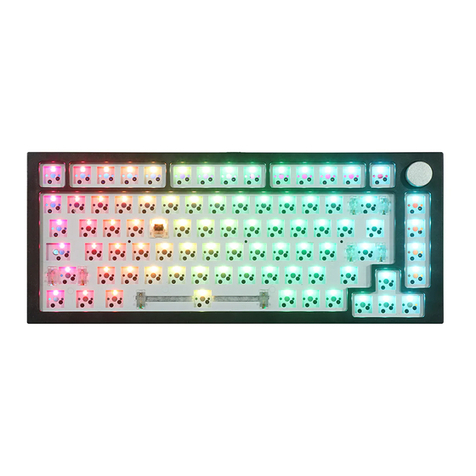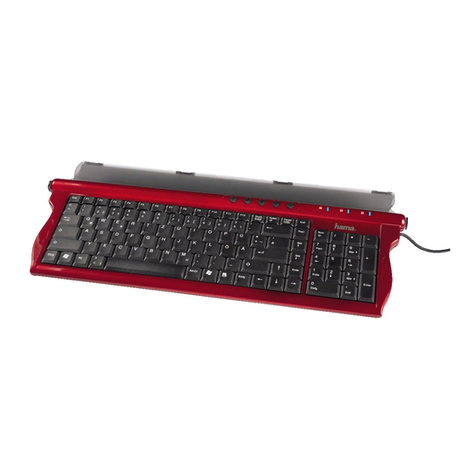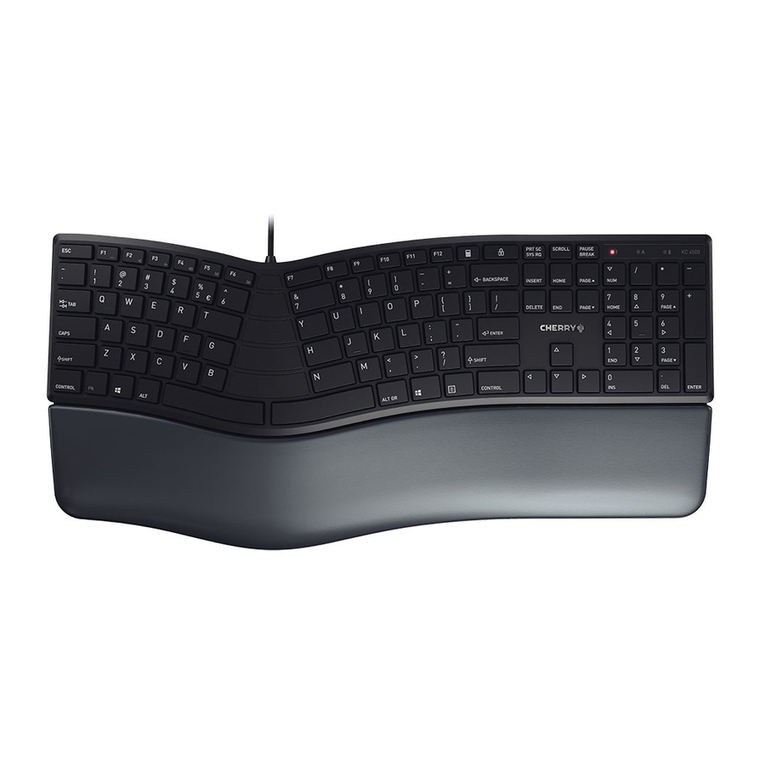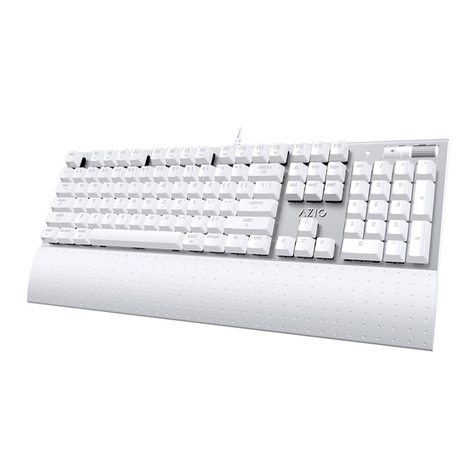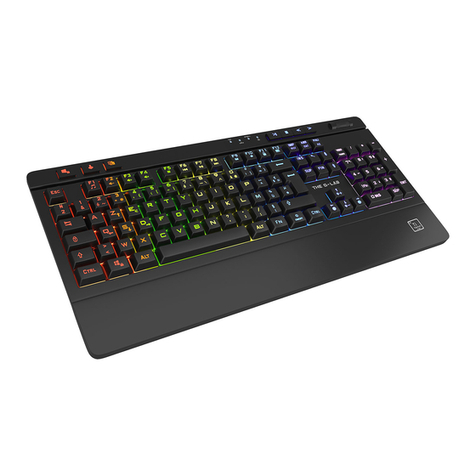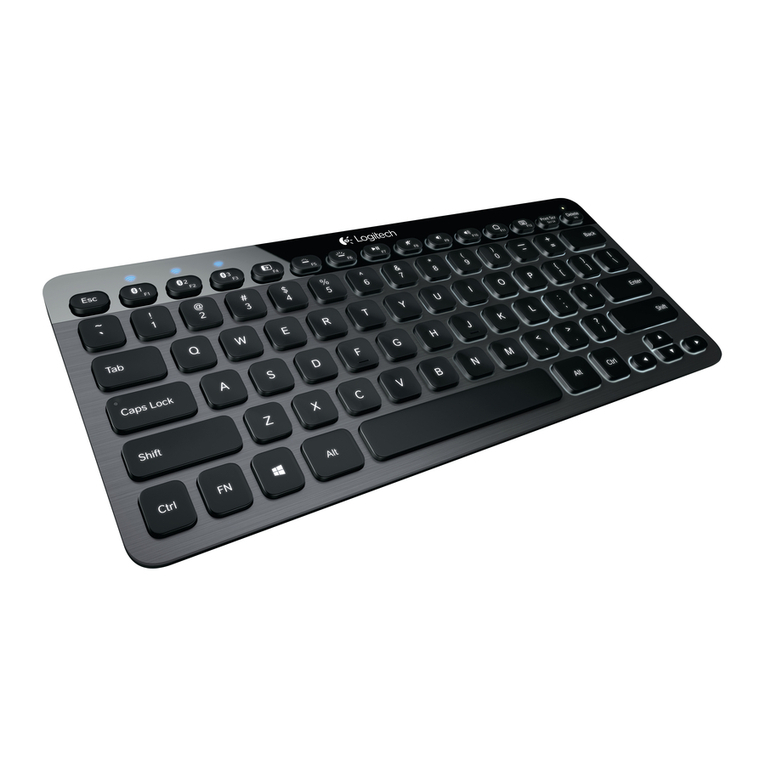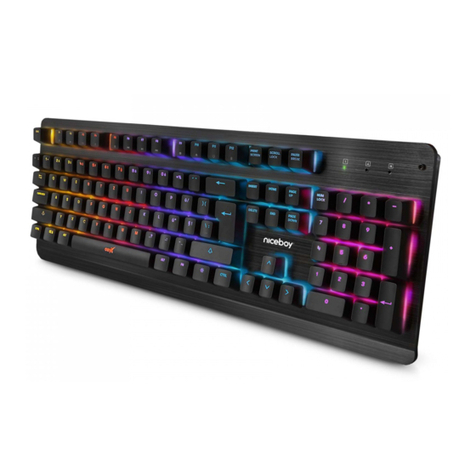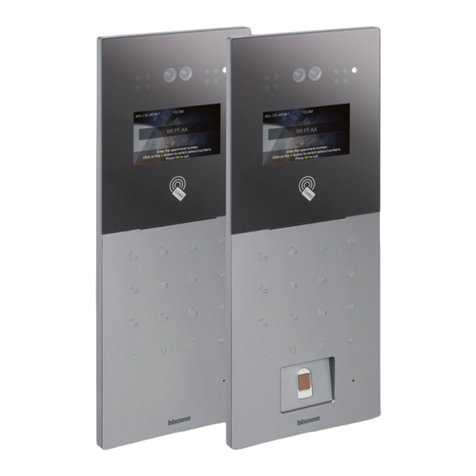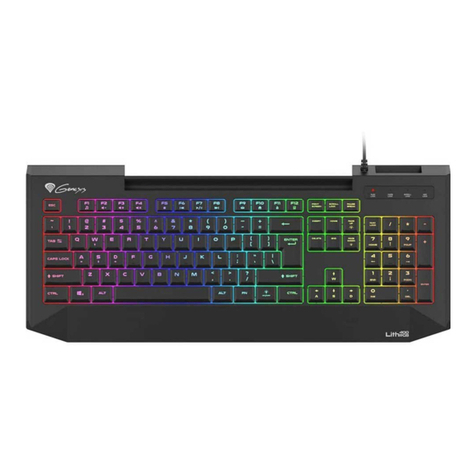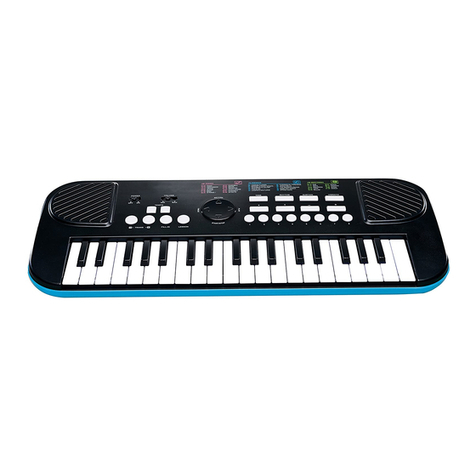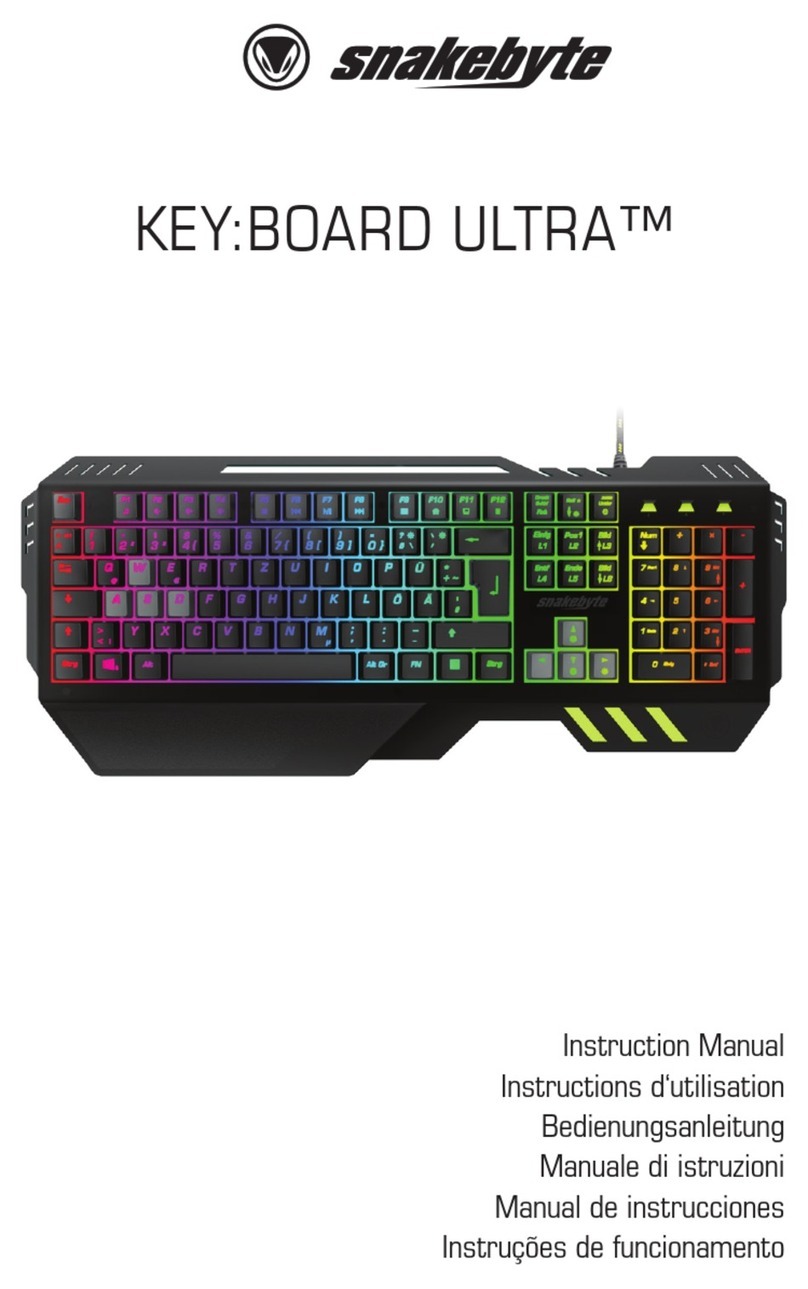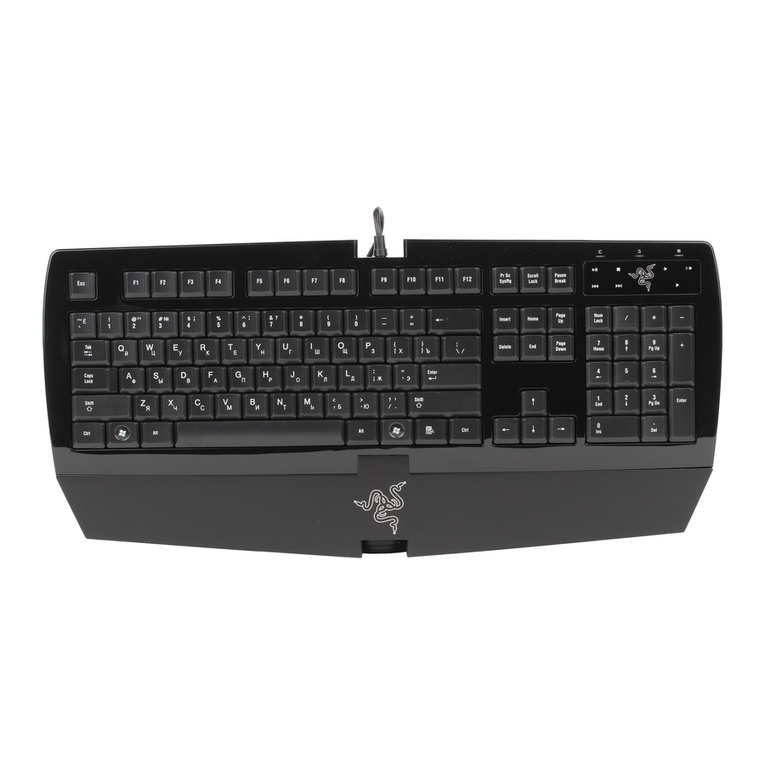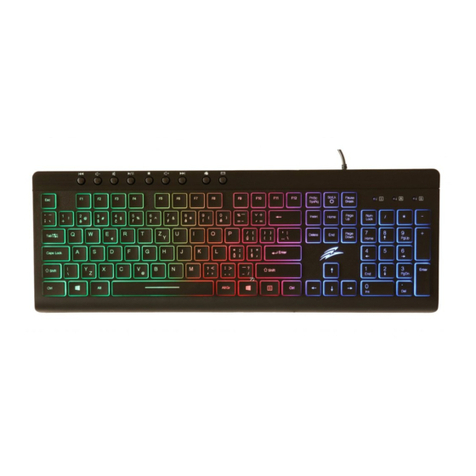Meriva MVK11IP User manual

Network Keyboard
User Manual
Please read this instruction carefully for correct use of the product and preserve it for
reference purposes

Thank you for purchasing our product. There may be several technically incorrect
places or printing errors in this manual. The updates will be added into the new
version of this manual. We will readily improve or update the products or procedures
described in the manual. The content is subject to change without notice.
Note
LCD display can be easily damaged. Please do not press or exposure in
sunshine for a long time.
The joystick can be easily damaged. If it needs to be repaired, please wrap and
ship it by using original or safety packaging.
This keyboard should be used in certain range of temperature and humidity,
referring the specifications.
Please connect the keyboard correctly as this manual requires.
Items
quantity
Note
Network
keyboard
1
/
DC12V power
adapter
1
Input :AC100-240V
Power cable
1
/
CD
1
Included user manual

Contents
1Introduction ................................................................................................................................1
1.1 Introduction...........................................................................................................................1
1.2 Rear Panel Instructions .........................................................................................................1
1.3 Front Panel Instructions ........................................................................................................1
1.4 Rules of Key Press................................................................................................................3
1.5 Joystick Control ....................................................................................................................3
2Setup ............................................................................................................................................5
2.1 Startup the Keyboard.............................................................................................................5
2.2 System Setup.........................................................................................................................5
2.2.1 Password Setup ..........................................................................................................5
2.2.2 Keypad ID Setup........................................................................................................6
2.2.3 Network Setup............................................................................................................6
2.2.4 Default Setup..............................................................................................................7
2.2.5 Question Setup ...........................................................................................................7
2.2.6 Playback Set...............................................................................................................7
2.3 PTZ Setup .............................................................................................................................7
2.4 Language Setup.....................................................................................................................7
2.5 Test........................................................................................................................................8
3PTZ Mode....................................................................................................................................9
3.1 Mode Setup...........................................................................................................................9
3.2 PTZ IP Setup.........................................................................................................................9
3.3 PTZ Operation ......................................................................................................................9
3.4 PTZ Shift...............................................................................................................................9
4Decoding....................................................................................................................................11
4.1 Screen Display Mode..........................................................................................................11
4.2 Camera->Monitor................................................................................................................11
4.3 Camera Group-> Window...................................................................................................12
4.4 Camera Group->Monitor ....................................................................................................12
4.5 Call Layout..........................................................................................................................13
4.6 Set and Call Macro..............................................................................................................13
4.7 Alarm Window Setup..........................................................................................................14
4.8 PTZ Control ........................................................................................................................14
4.8.1 Move or Stop............................................................................................................14
4.8.2 Set or Call Preset......................................................................................................15
4.8.3 Call or Stop Cruise/Track.........................................................................................15
4.8.4 Focus +/- ..................................................................................................................16
4.8.5 Zoom +/- ..................................................................................................................16
4.8.6 Iris +/-.......................................................................................................................16
4.8.7 Start or Stop Auto Scan ............................................................................................17

4.8.8 Enable/Disable Light................................................................................................17
4.8.9 Enable/Disable Wiper...............................................................................................17
4.9 Record Playback .................................................................................................................18
4.9.1 Start Playback...........................................................................................................18
4.9.2 Pause Playback.........................................................................................................18
4.9.3 Play the Previous 30s ...............................................................................................18
4.9.4 Play the Next 30s or Frame......................................................................................18
4.9.5 Stop Playback...........................................................................................................18
5Others ........................................................................................................................................19
5.1 View Information ................................................................................................................19
5.2 Lock....................................................................................................................................19
6Web............................................................................................................................................20
6.1 Web Access .........................................................................................................................20
6.2 Upgrade...............................................................................................................................21
7Specifications.............................................................................................................................22
Appendix..........................................................................................................................................23

Introduction
Network Keyboard User Manual -1
1Introduction
1.1 Introduction
This network keyboard is fully compatible with the NVMS/CMS of our company, which can control
camera, screen, monitor, etc. It’s easy to use for users due to the menu display on the screen.
1.2 Rear Panel Instructions
Name
Description
PW
When the network keyboard is working, the power indicator
turns red.
LINK
The network status indicator
RS232
Internal testing port
RJ45
RJ45 network port
RS485
Connect speed dome or the RS485 port of the DVR; TA
connects to RS485+; TB connects to RS485-
DC-12V
DC12V power input
WIFI
Unavailable
Grounding
1.3 Front Panel Instructions

Introduction
Network Keyboard User Manual -2
Name
Functions
SETUP
Local setup, such as keyboard ID, network setup.
INFO
Local information, such as ID, model, network parameters.
SHIFT
Auxiliary key for main interface shift or PTZ shift or security questions shift.
LOCK
Lock keyboard; press this key to lock the keyboard.
MON
Set the output (monitor).
WIN
Set the window of the current output.
CAM
Select the camera.
MULT
Set the screen display mode of the current output.
MON-G
Select the output group (monitor group).
CAM-G
Select the input group (camera group).
LAYOUT
Call scheme.
AUDIO
Enable/disable audio of the selected window.
Play
Pause
Stop
Enable / disable manual record.
Jump to the previous 30 seconds from the current playing time point by clicking this
button.
When the record is being played in the playback mode, it will jump to the next 30

Introduction
Network Keyboard User Manual -3
seconds from the current playing time point by clicking this button; when the record
is on hold, the system will play the next frame by clicking this button.
MACRO
Macro function key; set and call macro instructions.
ALARM
Set the first image of the current output as an alarm large image.
0-9
Input the number/ alphabet /symbol.
ESC
Cancel the number/alphabet; cancel the operation; return to the previous menu.
ENTER
Enter menu or confirm to save the current settings.
PRESET
Set and call the preset.
CRUISE
Call or stop the cruise.
TRACK
Call or stop the track.
AUTO
Enable or disable the auto scan.
FOCUS+
Click it to have long focus.
FOCUS-
Click it to have short focus.
ZOOM+
Zoom in
ZOOM-
Zoom out
IRIS+
Iris increases
IRIS-
Iris decreases
WIPER
Enable or disable wiper.
LIGHT
Enable or disable light.
1.4 Rules of Key Press
Double press--- the interval time between two presses less than 2 seconds. It mainly uses to switch
the alphabet.
For example, press 2 twice to input A; press 2 three times to input B. Please see appendix for the
detailed rules of key press.
When selecting or switching the operating object, it usually starts with the number key and ends
with the corresponding functional key. Take the following as examples.
1+MON (press 1 and then press MON)—— select 1 output
123+CAM (press 1, 2, 3 and then press CAM)—— select 123 output
10+PRESET (press 1, 0 and then press PRESET)—— call preset 10
1.5 Joystick Control

Introduction
Network Keyboard User Manual -4
Figure
Operation
Function
Up
In PTZ control mode: control the speed dome to move
up.
Down
In PTZ control mode: control the speed dome to move
down.
Left
In PTZ control mode: control the speed dome to move
left.
Right
In PTZ control mode: control the speed dome to move
right.
Upper left
In PTZ control mode: control the speed dome to move
towards upper left.
Upper right
In PTZ control mode: control the speed dome to move
towards upper right.
Lower left
In PTZ control mode: control the speed dome to move
towards lower left.
Lower right
In PTZ control mode: control the speed dome to move
towards lower right.
Rotate left
Zoom in
Rotate right
Zoom out

Setup
Network Keyboard User Manual -5
2Setup
2.1 Startup the Keyboard
First connect the network cable to the keyboard and then connect the power. After the device starts,
please input the default password (8888) and then press “Enter” key to go to main interface (see left
figure). Press “Setup” key to go to the system setup menu (see right two figures).
2.2 System Setup
All system setup menus are as follow. You can move the joystick up or down to see all system setup
menus.
2.2.1 Password Setup
Select the password setup menu and press “Enter” key to go to password setup.
Input the old password by moving the joystick right one by one (the default password is 8888).
Select the new password by moving the joystick down and then input the new password as the
above mentioned method. Finally confirm the new password and press “Enter” key to save the
settings. If you want to change the inputted number, please move the joystick to current position to
change the current number. If you want to cancel the inputted number, you can press “0”for two
times. Press “Enter” key to save the new password. Press “Cancel”key to return to the previous
menu.

Setup
Network Keyboard User Manual -6
2.2.2 Keypad ID Setup
Select the keypad ID setup menu and press “Enter” key to go to keypad ID setup.
The effective value of the ID is from 1 to 32.
To set keypad ID, press digital number and enter key (eg. press 32 and then press “Enter” to set the
keypad ID at 32).
2.2.3 Network Setup
Network setup includes local IP setup, PLAT IP setup and PTZ IP setup. The local IP address, the
PLAT IP address and PTZ IP address must be in the same local network segment.
Local IP Setup
Select “Local IP Setup” and press “Enter” to go to local IP setup. You can set the local IP address,
subnet mask, default gateway, DNS server, alternate DNS and HTTP port.
IP address: Select IP address and press “Enter” to set the IP address. The default IP address is
192.168.1.201.
Tips: Move the joystick right to set the IP address. Press “Enter” to save the settings and
return to the previous menu.
Subnet mask: select subnet mask and press “Enter”to set subnet mask. The default subnet mask
is 255.255.255.0.
Default GW: the default gateway is 192.168.1.1. Please input it according to the actual network.
DNS server: the default DNS server is 8.8.8.8. Please input it according to the actual network.

Setup
Network Keyboard User Manual -7
Alternate server: the default alternate server is 4.4.4.4. Please input it according to the actual
network.
HTTP port: the default http port is 4000. Please input it according to the actual network.
PLAT IP Setup
Select “PLAT IP setup”and press “Enter”to set the PLAT IP address.
IP address: input the IP address of the TV Wall Client of the ECMS/NVMS 5000.
Port: the default port is 56789. The port must be the same with that of the TV Wall Client.
Name and password: the name and password must be the same with that of the TV Wall Client.
Test: To test if the keyboard is online.
PTZ IP Setup
Please see 3.2 PTZ IP Setup for details.
2.2.4 Default Setup
Select it and press “Enter” to restore the system settings to the default factory settings.
2.2.5 Question Setup
Select it and press “Enter”to set the security question which can reset your password.
2.2.6 Playback Set
Only some models support this function.
Select it and press “Enter”to set instant playback time when using the network keyboard to control
video output of the decoder.
2.3 PTZ Setup
Select it and press “Enter” to go to the settings of PTZ to set the speed of the PTZ.
2.4 Language Setup
Select it and press “Enter” to switch the language between English and Chinese. Some models also
support Polish, Hungarian, Italian and so on.

Setup
Network Keyboard User Manual -8
2.5 Test
Select it and press “Enter” to test if the button is available. User can also check if the silk-screen on the
button and display on the screen is consistent which is not use for operating equipment.

PTZ Mode
Network Keyboard User Manual -9
3PTZ Mode
3.1 Mode Setup
Platform mode and PTZ mode are optional. Select PTZ mode and press “Enter” to select. Some
models may connect 256 PTZs and control PTZs which support ONVIF.
Tips: Some models support a default mode (platform mode or PTZ mode), namely it will
restore to the last working mode after restart. In PTZ mode, you only need to select
operational PTZ, do not need to choose the output and the window, and the other operations
are similar to the platform modes.
3.2 PTZ IPSetup
Go to Network Setup to select “PTZ IP Setup” and press “Enter” to go to select the PTZ. Then set
the IP address, port, name, password of the PTZ selected.
IP address: input the IP address of the PTZ. This IP address must be in the same local network
segment with the local IP address of the network keyboard.
Port: the default port is 80 (the http port of the PTZ).
Name and password: the name and password must be the same with that of the PTZ.
Test: To test if the PTZ is online.
Clear: To clear the information of the PTZ (Only some models support this funtion).
3.3 PTZ Operation
After setting up the IP address, port, name and password of the PTZ you can operate the PTZ by
joystick or PTZ controller keys. Please see 4.8 PTZ Control for more details.
3.4 PTZ Shift
Some models support shifting the PTZs by pressing “Number plus SHIFT”.

PTZ Mode
Network Keyboard User Manual -10
Select other PTZ and setup the IP address, port, name and password. Please see 3.2 PTZ IP Setup for
more details.
Press “SHIFT”to switch the PTZs of which the IP address is setup well.

Decoding
Network Keyboard User Manual -11
4Decoding
Before using the network keyboard to control video output of the decoder, please make sure the
authentication server, media transfer server, storage server, alarm server and TV wall server of the
ECMS/NVMS5000 all starts and they are all connected well with the decoder.
Note: Here we only take platform mode as example. If you choose the same monitor(window
or camera), you can skip the steps of inputting the monitor(window or camera).
4.1 Screen Display Mode
At present, it is only to support 1/4/9/16 screen display mode.
To set the screen display mode
1. Input the monitor number (the output number) and then press “MON” key to call this output. For
example, input 1 and then press “MON” to select No. 1 output.
2. Input the number of the screen display mode and then press “MULT”to set the screen display
mode of the above output. For example, input 9 and then press “MULT”to set at 9 screens display
mode.
Note: * The effective value is from 1 to 999. The maximum number of the screen display mode of
TV wall client is 16 screens. As a result, the maximum of 16 screens can be called when controlling
TV wall client.
* When controlling the output, the number of the output of the TV wall client must be set in
advance. The way to set the output number is to drag the output window to the right hand in the TV
wall client interface and then right click the top of the small window to pop up a menu. Then go to
TV wall clientSetupChannel-NO. Mapping to change the output number.
4.2 Camera->Monitor
Select the input signal (camera) to the designated output and window.
1. Select monitor (output). For example, input 1 and then press “MON”to select NO.1 monitor.
2. Select screen display mode. For example, input 4 and then press “MULT”to select 4 screens
display mode.
3. Select window. For example, input 3 and then press “WIN”to select NO. 3 window.
4. Select camera. For example, input 3and then press “CAM”to select NO. 3 camera.

Decoding
Network Keyboard User Manual -12
As a result, you will see the image of NO.3 camera in NO.3 window and 4 screens display mode
will be seen in NO.1 monitor.
You can check the relationship between camera number and channel from ECMS/NVMS5000 (go to
TV wall clientSetup Channel-NO. mapping).
Note: The effective value of the camera is form 1 to 999999. When NO. zero camera is inputted, it
means to delete the input from the designated window. The effective value of the window is from 1
to the number of the current all split screens.
4.3 Camera Group-> Window
Select the camera group to the designated window. The camera group will be played in sequence in
this window. The setting steps are as follow.
1. Select monitor (output). For example, input 1 and then press “MON”to select NO.1 monitor.
2. Select screen display mode. For example, input 4 and then press “MULT”to select 4 screens
display mode.
3. Select window. For example, input 3 and then press “WIN”to select NO. 3 window.
4. Select camera group. For example, input 2 and then press “CAM-G”to select NO. 2 camera
group.
Camera group settings: go to TV wall clientSetupCreate Channel Group to create channel
(camera) group and dwell time. Then click “Modify or Delete Channel Group”to add the channel
for this camera group. The effective value is form 1 to 999999.
4.4 Camera Group->Monitor
Select the output group (camera group) to the designated output monitor. If the camera quantity of
the camera group (m) is equal or less than the quantity of the output window (n), the camera output
will be all displayed in the current screen display mode. If m is greater than n, the previous n
cameras will be output to the n windows in sequence and then the remaining n cameras will be
output to the n windows in sequence after the dwell time is up until all cameras of the camera group

Decoding
Network Keyboard User Manual -13
is displayed. After that, all cameras of the camera group will be played again like that. The setting
steps are as follow.
1. Select monitor (output). For example, input 1 and then press “MON”to select NO.1 monitor.
2. Select screen display mode. For example, input 4 and then press “MULT”to select 4 screens
display mode.
3. Select camera group. For example, input 2 and press “CAM-G”to select NO. 2 camera group.
4.5 Call Layout
You may set the input or output scheme in advance and then call it through network keyboard. For
example, input 1 and then press “LAYOUT”to select NO.1 scheme.
To set scheme: go to TV wall client and then drag the outputs to the right window. Next, set the
screen display mode and add the cameras for all outputs. Finally click “Save”to save the scheme.
The scheme will be saved at the bottom of the TV wall client. You can call the saved scheme by
inputting number and pressing “LAYOUT”on the network keyboard. The effective value is form 1
to 9999.
4.6 Set and Call Macro
Macro is used to provide a shortcut to execute a group of consecutive actions. A macro includes a
maximum of 50 key orders. Macro instructions are saved in the keyboard. The setting steps of
macro are as follow.
1. Input the digital number and then press and hold “MACRO”key to set macro. For example, input
2 and press “MACRO”key for more than 2 seconds to set NO.2 macro.
2. Input a series of keys. For example, input 1 and press “MON”, input 2 and press “WIN”, input 2
and press “CAM”.
3. Press “Enter”to complete the macro setup.

Decoding
Network Keyboard User Manual -14
Input digital number and then press “MACRO”to call NO. 2 macro instruction. Moving the joystick
down can display all information of this macro instruction. Press “ESC”key of the keyboard to
return to the main menu of the keyboard.
4.7 Alarm Window Setup
You can set the designated window as an alarm window. The designated window is NO.1 window
by default, which cannot be modified in case the designated window set by the user is not existence.
The setting steps are as follow.
1. Select the output. For example, input 1 and press “MON”to select NO.1 monitor.
2. Press “ALARM”key to set the designated NO.1 window (channel) as alarm window. If the
current NO.1 window (channel) has been set as alarm window, the alarm window will be cancelled
by the above operation.
4.8 PTZ Control
Only when the PTZ is input to the window and there is not sequence display in this window, can the
PTZ control be effective—that is, the camera input to this window must be a PTZ device (or speed
dome).
4.8.1 Move or Stop
The setting steps are as follow.
1. Select the output (monitor). For example, input 1 and press “MON”.
2. Select the window. For example, input 3 and press “WIN”.
3. Control the speed dome/PTZ by moving the joystick. When moving the joystick back to the
original place, the speed dome stops moving.

Decoding
Network Keyboard User Manual -15
Note: The camera input to the above example of NO. 3 window must be a PTZ device (or speed
dome), or the calling is invalid. The effective value of the preset is from 1 to 255. The effective
value of the cruise is from 1 to 8 and. The effective value of track is from 1 to 4. If the calling
number is beyond the range, an invalid tip will be displayed on the screen.
4.8.2 Set or Call Preset
To set preset
1. Select the output. For example, input 1 and then press “MON”.
2. Select the window. For example, input 3 and then press “WIN”.
3. Set the position of the preset by moving joystick.
4. Press the digital number on the keyboard to select the number of preset. Then press “PRESET”
for more than 2 seconds to set the preset. For example, input 1 and then press “PRESET”for more
than 2 seconds to set the NO.1 preset.
To call preset
1. Select the output. For example, input 1 and press “MON”.
2. Select the window. For example, input 3 and press “WIN”.
3. Select the preset. For example, input 1 and press “Preset”.
4.8.3 Call or Stop Cruise/Track
To call cruise/track
1. Select the output. For example, input 1 and press “MON”.
2. Select the window. For example, input 3 and press “WIN”.
3. Select the cruise/track. For example, input 1 and press “CRUISE/TRACK”.

Decoding
Network Keyboard User Manual -16
To stop cruise/track
1. Select the output. For example, input 1 and press “MON”.
2. Select the window. For example, input 3 and press “WIN”.
3. Select the cruise/track. For example, input 0 and press “CRUISE/TRACK”or press
“CRUISE/TRACK”directly.
4.8.4 Focus +/-
To set focus +/-
1. Select the output. For example, input 1 and press “MON”.
2. Select the window. For example, input 3 and press “WIN”.
3. Press “FOCUS+”or “FOCUS-”.
4.8.5 Zoom +/-
To set zoom +/-
1. Select the output. For example, input 1 and press “MON”.
2. Select the window. For example, input 3 and press “WIN”.
3. Press “ZOOM+”or “ZOOM -”.
4.8.6 Iris +/-
To set iris +/-
1. Select the output. For example, input 1 and press “MON”.
2. Select the window. For example, input 3 and press “WIN”.
3. Press “IRIS+”or “IRIS -”.
Table of contents

